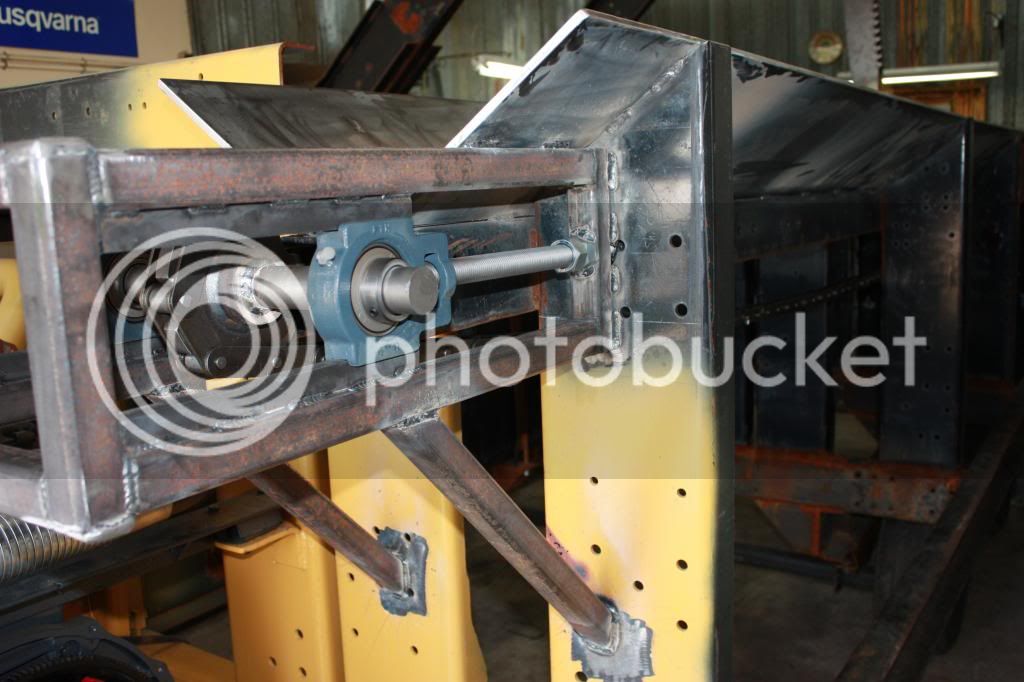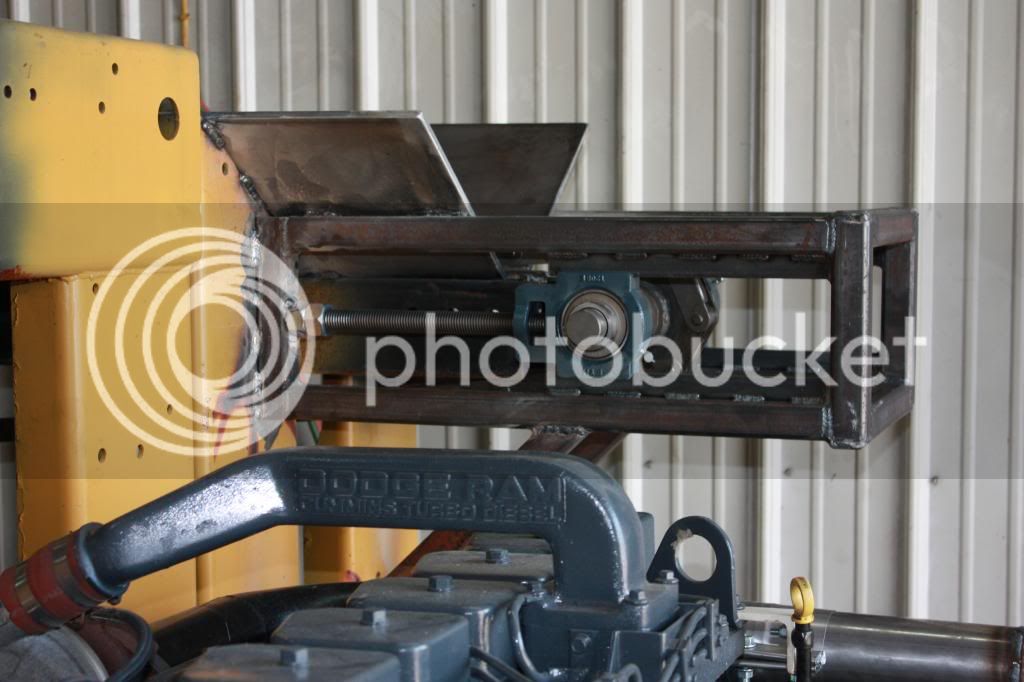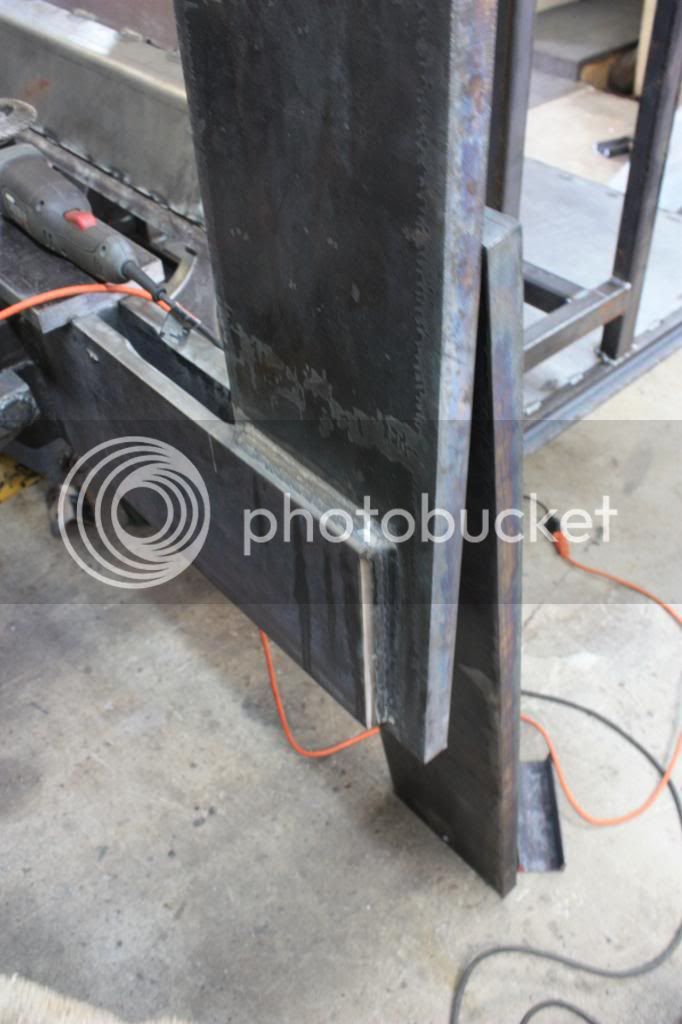chaikwa
ArboristSite Operative
Here are some pics of the processor I'm building.
This is the push-plate and 6" cylinder. There are 5, 5/8" bolts on each side that hold the retainers to the bottom of the push plate. The retainers are 2" X 2" solid squares that have had a 1" X 1" square cut out of them to accommodate the thickness of the top flange on the beam. The beam is made from 2, 1" X 10" X 10 foot solid flat bars spaced 1 1/4" apart. The wedge will sit between them and slide up and down as needed.

Side view of splitting beam assembly and push-plate.

End view of beam and push-plate

Another view showing the log lift at the end of the in-feed trough in the down position. When it is up, it will serve to take the cut off logs from the in-feed trough and roll them into the splitting chamber. The log lift will form one side of the splitting chamber in the up position. The purpose of this is so that I can use this thing as a conventional log splitter if I need to split wood that has already been chunked up.

At the front end of the processor is the engine, a 6BT Cummins producing 160HP.

That's all for now. I'll keep adding pics as I continue the build.
This is the push-plate and 6" cylinder. There are 5, 5/8" bolts on each side that hold the retainers to the bottom of the push plate. The retainers are 2" X 2" solid squares that have had a 1" X 1" square cut out of them to accommodate the thickness of the top flange on the beam. The beam is made from 2, 1" X 10" X 10 foot solid flat bars spaced 1 1/4" apart. The wedge will sit between them and slide up and down as needed.

Side view of splitting beam assembly and push-plate.

End view of beam and push-plate

Another view showing the log lift at the end of the in-feed trough in the down position. When it is up, it will serve to take the cut off logs from the in-feed trough and roll them into the splitting chamber. The log lift will form one side of the splitting chamber in the up position. The purpose of this is so that I can use this thing as a conventional log splitter if I need to split wood that has already been chunked up.

At the front end of the processor is the engine, a 6BT Cummins producing 160HP.

That's all for now. I'll keep adding pics as I continue the build.


















